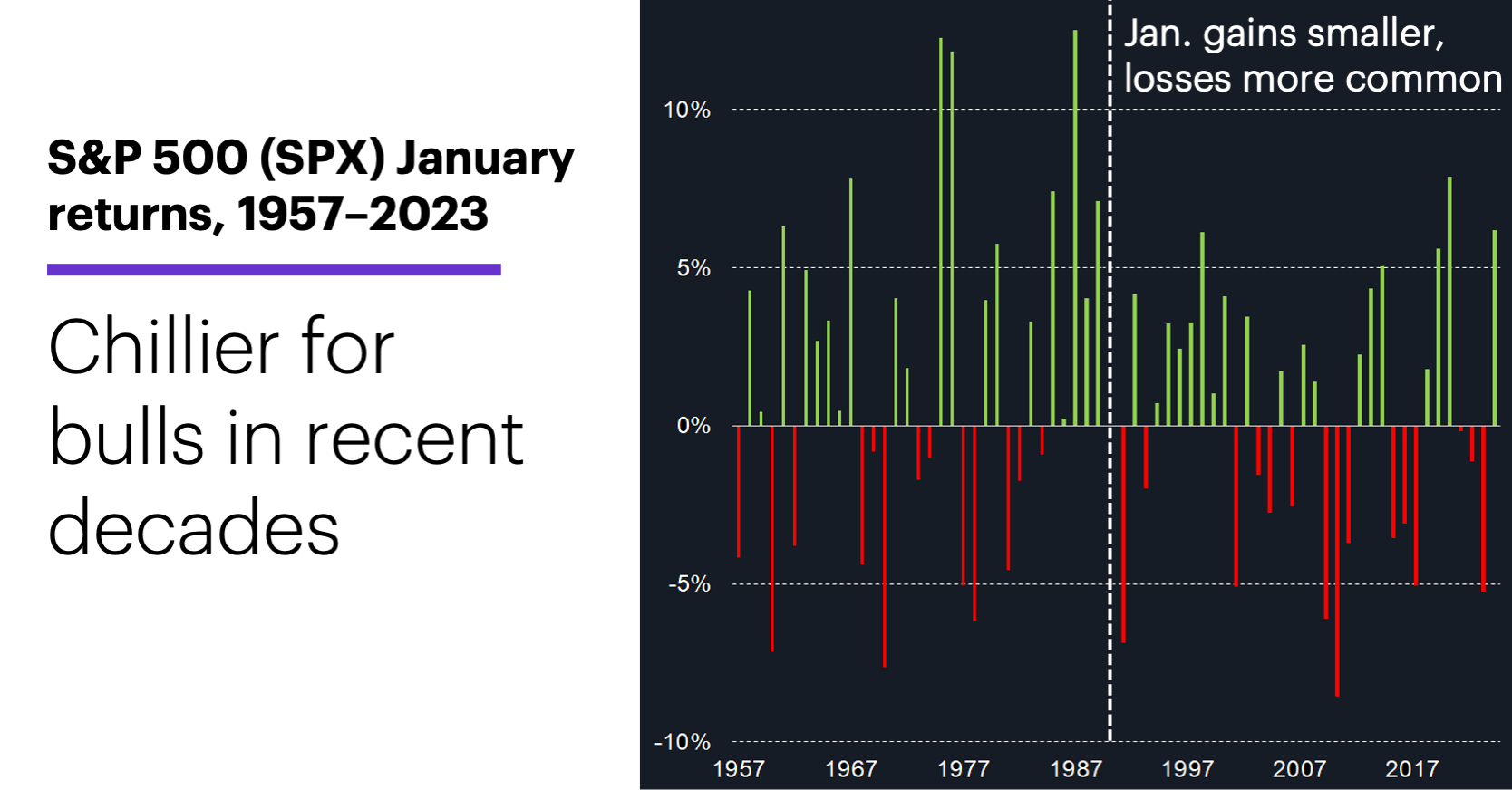The January shift
- January a down month more often in recent decades
- S&P 500 negative for January six of past 10 years
- Not a reliable indicator of a year’s performance
With the New Year around the corner, it’s a good time to take a look at the seasonal patterns that have played out in January over the years.
The S&P 500 (SPX) has a positive return in 39 of the past 67 Januaries—60.5% of the time, the third-highest percentage of all months—but as the following chart shows, the first month of the year has been less bullish in recent years:

Source (data): Power E*TRADE. (For illustrative purposes. Not a recommendation. Note: It is not possible to invest directly in an index.)
Splitting this historical window roughly in two (1957–1989 and 1990–2023) highlights the shift. In the first half, January had the highest average return of any month (1.7%), but only the eighth-highest (0.3%) in the second half. Similarly, in the first half January was tied for the third-most positive returns (61%), but fell to 10th place in the second half (56%). Digging a little deeper, the average positive January return shrank from 5.3% in the first half to 3.5% in the second half. Meanwhile, the average January loss remained roughly the same size (-3.8%).1
The change has been most evident over the past 10 to 20 years. Since 2004, the SPX has declined in January 10 times, including three of the past four years and six of the past 10. That said, January 2022’s 6.2% SPX return was the second-strongest since 1990.
Finally, January’s track record as a forecaster of up or down years (especially the latter) is more myth than math. The SPX’s 28 negative Januaries since 1957 occurred in 14 positive years and 14 negative years—a coin toss.
However, this flawed, “As goes January, so goes the year” concept does have one potentially interesting facet: Exceptionally large January sell-offs have often initiated down years, and exceptionally large yearly losses have often begun with negative Januaries. For example, the SPX fell 5.3% in January 2022, and it marked the eighth time out of 12 that the SPX lost ground for the year after falling 4% or more in January. Also, 2022 was one of the SPX’s 11 biggest down years since 1960, and the ninth of those that began with a negative January.
Today’s numbers include (all times ET): advance Trade Balance in Goods (8:30 a.m.), Weekly Jobless Claims (8:30 a.m.), advance Retail and Wholesale Inventories (8:30 a.m.), Pending Home Sales (10 a.m.).
Click here to log on to your account or learn more about E*TRADE's trading platforms, or follow the Company on Twitter, @ETRADE, for useful trading and investing insights.
1 Reflects S&P 500 closing price data from 12/30/56–1/30/23. Supporting document available upon request.